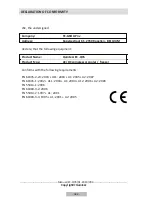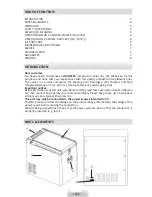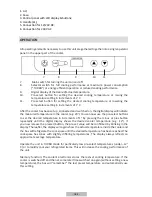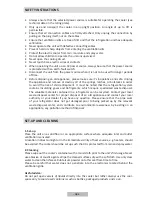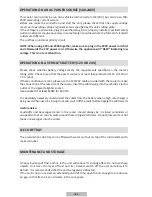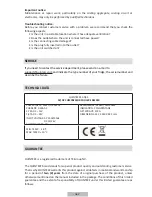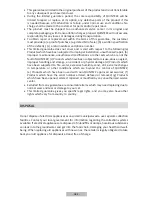
- GB-6 -
OPERATION ON AN AC POWER SOURCE (100-240V)
This cooler can not only be run on a vehicle electrical system (12/24V), but also on an 100-
240V alternating current system.
Before you make the connection and start the unit, please check that line supply voltage
meets unit operating voltage requirements as specified by the unit’s rating plate.
If the voltage is permissible, plug the earthed plug into a properly installed, earthed safety
outlet. An adapter may be necessary in some foreign countries where the format of standard
outlets are different.
The unit has an internal priority circuit.
NOTE: When using 24V and 230V together, make sure to plug in the 230V power cord first
and afterwards the 24V power cord. Otherwise the appliance will “BEEP” indicating low
voltage. This is not a malfunction.
OPERATION ON A VEHICLE’S BATTERY (12V OR 24V)
Please check whether battery voltage meets the requirements specified on the cooler’s
rating plate. Check to see that the power source is at least fuse-protected at 15 A (12V) or
7.5 A (24V).
If these conditions are met, please use the 12V/24V cable provided with the cooler to make
the connection at the rear-side of the cooler; insert the cable’s plug into the vehicle’s electric
outlet or the cigarette lighter socket.
Use a socket of at least 120W for 12V DC.
It is absolutely necessary to disconnect the cooler from the battery when a high-rate charger is
being used. When used in a tip-up truck cab, switch off the cooler before tipping the cab forward.
Useful advice:
Foodstuffs and beverages stored in the cooler should always be in closed containers or
wrapped so that air can circulate around these refrigerated items. Do not place warm or hot
foods or beverages into the cooler.
ICE CUBE TRAY
The provided ice cube tray can be filled with water and put on top of the inside element to
make ice cubes.
MAINTENANCE AND STORAGE
A heavy build-up of frost and ice in the unit will reduce its cooling effect. Do not use sharp
objects to remove the layer of frost and ice; instead, switch off the unit and allow it to
defrost. It is recommended that the unit be regularly defrosted.
If the unit is not in use over an extended period of time, open the lid enough to produce an
air gap so that fresh air can circulate in the cool-space.


